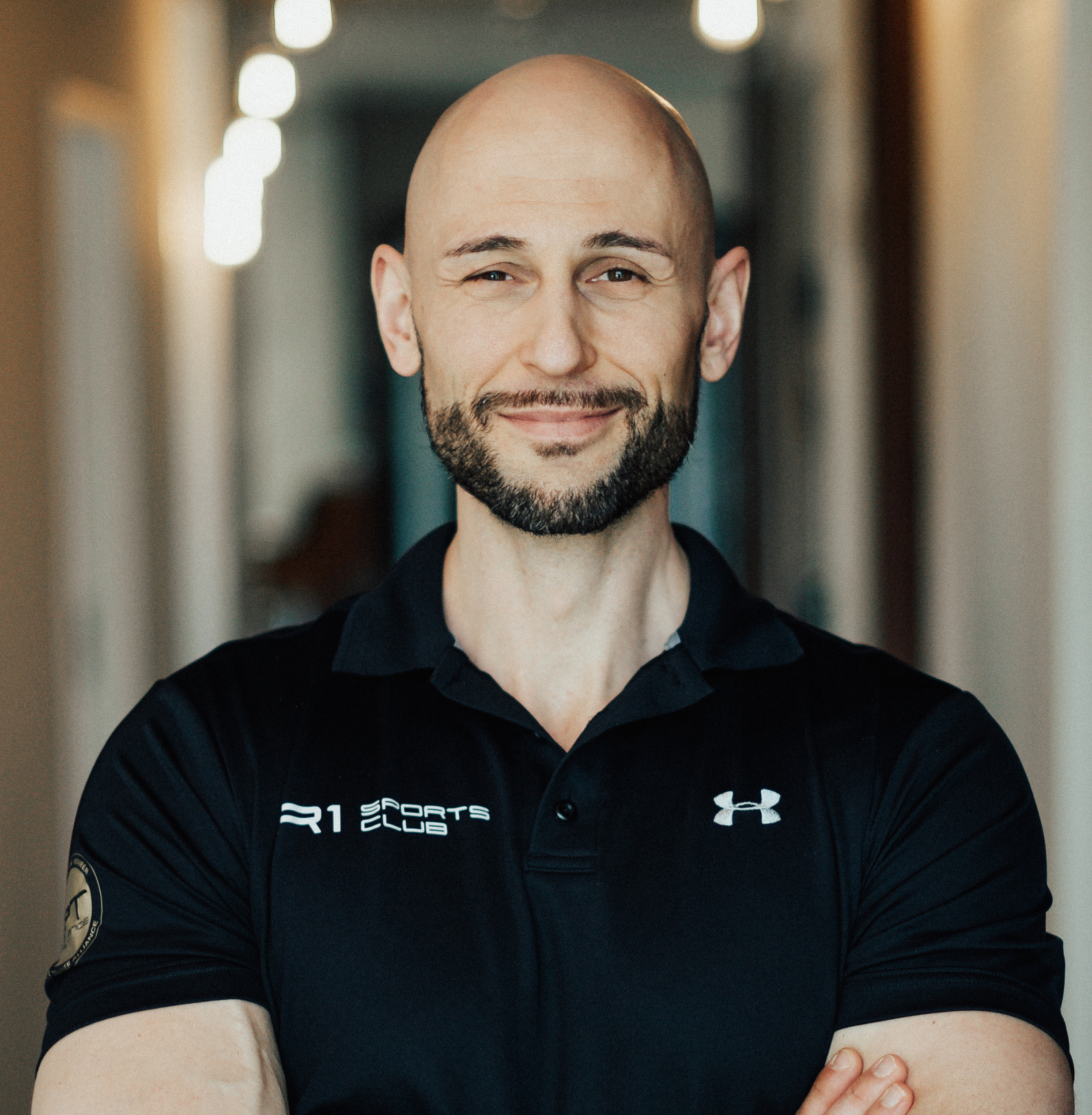[One of Germany’s most well-known personal trainers, Thomas Korompai designed the R1 training system, a holistic approach to training applied at the R1 Sportsclub.]
Omegawave: How is Omegawave integrated into the training program at R1 Sportsclub?
Thomas Korompai: Omegawave—together with the concept of fluid periodization—is introduced to all trainers in our academy. We have two locations, in Munich and Starnberg, where all of our customers are introduced to Omegawave as well. Taking an Omegawave assessment immediately at the first training with our clients helps us not only to screen them, but also to make them receptive towards our dynamic approach to training. In addition, we use the first assessment to determine heart rate training zones—this is important, as those heart rate zones build the base for different performance tests later on.
Ultimately, we use the Omegawave Coach system to manage the readiness data of all of our clients. However, we don´t consider ourselves solely as personal trainers, but feel the responsibility to explain the data to our customers and to make them familiar with concepts such as heart rate variability and training that is optimized based upon biological data that was collected from their body.
Generally, we offer packages of 20 measurements to our clients. One measurements is then integrated into each personal training session. Our clients´ feedback is very positive as they constantly strive to learn more about their bodies. The Omegawave data really helps us here.
In particular, people with demanding lifestyles appreciate the Omegawave system. For example, a person who doesn’t sleep more than 6 hours per night, potentially has a stressful, executive-type position at work, and who is generally interested in learning tools to help better cope with that demanding lifestyle. Those people generally know that having the foot constantly on the gas pedal doesn’t work in the long run, and that they sometimes have to shift down a gear in order to stay healthy and in shape. In this regard, I would say that we work less with athletes but rather with so called “high-performers” of daily life. We also work together with a psychologist who helps us to make sense of the data whenever it gets complicated in particular cases.
We have a very holistic approach towards personal training, with the focus on four key areas: nutrition, exercise, recovery, and mental reflection. Therefore, we not only train stressed people, but also investigate the sources of their stress and try to start our work from there. Omegawave is especially of value for us in this regard, as the system often shows fatigue in the organism despite the respective person not necessarily feeling stressed. If such a situation continues, we advise our clients to undergo cortisol tests under medical supervision. We then elevate our personal training to the next level of coaching.
OW: What surprising data have you seen with Omegawave?
TK: It has been interesting when people continue to have a severe lack of sleep. Oftentimes we then see additional ventricular systoles during the assessment, despite potentially green overall Windows of Trainability. Due to these changes in the electrical signal of the heart, we can assume that there might be biological inhibitions taking place in the cardiac system—based on this, we can adjust our training and recovery interventions accordingly. These may be only little things, but in my opinion, they make the difference in personal training.
OW: How do you deal with people whose subjective perception of stress does not correlate to the collected Omegawave data?
TK: Ultimately, we enjoy quite a high reputation as coaches here. When we consult our clients and provide training and lifestyle advice, they usually listen. The Omegawave data not only helps us to always justify our decisions, but it also puts us in a situation in which we can ask the right kind of questions, such as: How is your sleep management? How is your nutrition? What can we still improve in your training and lifestyle, and how? We can then evaluate together with the client if our training and interventions are successful in the long term. The trend analysis of the Omegawave data helps us here as we can see how the biological data has been developing over time in comparison to overall health and fitness.
We also always correlate the collected objective data to the subjective perception of stress by each individual. In this case we talk about an “energy barrel” from 0 – 100%, which describes a client´s overall stress level. We use this combination of objective and subjective stress data to help our clients manage their daily stress more effectively and in a more sustainable manner. In the future, we hope to integrate the objective Omegawave data and subjective perception data in our own application to use with our clients.
